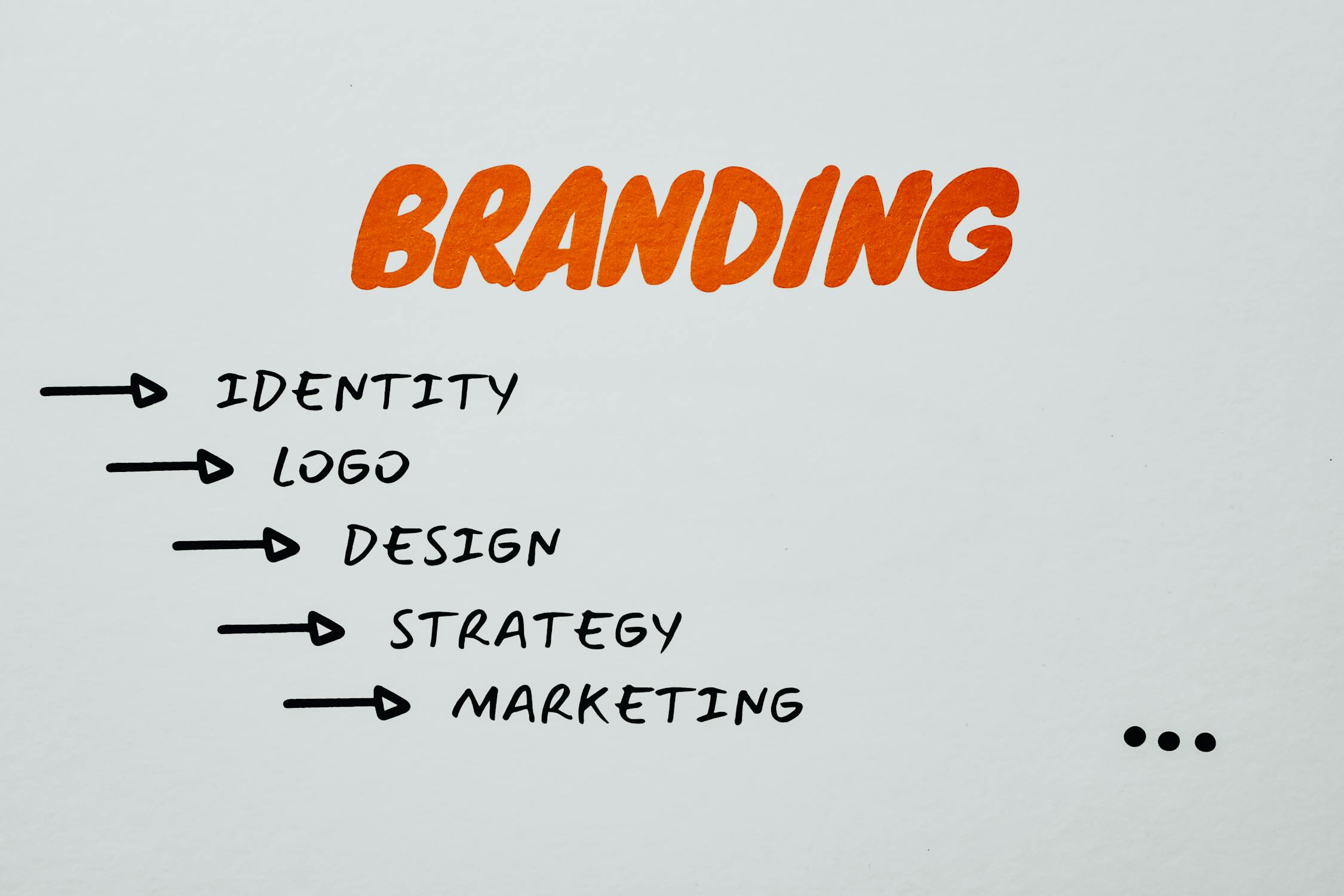Building brand loyalty in a competitive landscape is increasingly challenging in today’s crowded markets. Aggressive pricing strategies, evolving consumer preferences, and rapid digital innovation mean that brands must work harder than ever to secure lasting customer relationships. This article presents a comprehensive approach to building brand loyalty through understanding your core audience, developing a resonant brand identity, delivering exceptional customer experiences, implementing value-driven programs, nurturing ongoing relationships, and continually measuring and adapting your loyalty strategies.
Central to this approach is the idea that customers are now active participants in a brand’s ecosystem rather than passive buyers. Every touchpoint, from initial brand awareness to post-purchase service, is an opportunity to differentiate your business. By leveraging data-driven insights, innovative tools, and authentic storytelling, companies can build a loyal customer base that not only drives revenue but also champions the brand.
Key Takeaways
- Understand your core audience by mapping their journey and addressing pain points for better segmentation.
- Develop a distinct brand identity by clearly defining your unique value proposition and maintaining consistency in messaging.
- Deliver exceptional customer experiences through personalized, omnichannel touchpoints.
- Implement reward and loyalty programs that deliver tangible benefits, exclusive content, and early access.
- Continuously measure key loyalty metrics and adjust strategies to remain competitive.
Understanding Your Core Audience in Crowded Markets

Begin building loyalty by clearly defining your ideal customer through detailed demographics, psychographics, and behavior. Use market research tools such as surveys, focus groups, and social media analytics to gather insights. A well-defined ideal customer profile not only helps tailor marketing communications, from influencer collaborations to personalized email campaigns, but also supports the creation of detailed buyer personas that drive conversion rates and retention. This clarity creates a foundation for future segmentation while deepening the psychological bond with customers.
Analyze Customer Needs and Pain Points
Collect customer feedback via reviews, surveys, and social media interactions to understand needs and pain points. Address issues, such as slow customer service, by implementing solutions like streamlined support systems or chatbots. Combining quantitative data (churn rates, net promoter scores) with qualitative testimonials helps companies address customer challenges early, differentiate their service offerings, and build trust and long-term loyalty.
Map the Customer Journey in a Competitive Arena
Visualize the customer journey, from awareness and evaluation to purchase, retention, and advocacy, to pinpoint critical touchpoints. Breaking down the process and analyzing performance indicators (like time from inquiry to purchase) enables brands to minimize friction and ensure a seamless transition between stages. This strategic mapping facilitates targeted interventions and helps reinforce a cohesive brand experience, making re-engagement easier and more effective.
Gather Feedback to Refine Audience Understanding
Gather feedback regularly using surveys, live chats, and social media polls to refine your understanding of the audience. These feedback loops provide real-time insights and allow brands to adjust engagement strategies as market trends evolve. When customers see that their opinions lead to tangible changes, such as improved user experience on a website, they feel valued and develop greater loyalty.
Segment Your Audience for Targeted Loyalty Strategies
Divide your customer base into distinct segments based on behavior, demographics, and engagement levels. Tailor marketing communications for each segment; for example, offer high-value customers exclusive promotions or early product access, while providing introductory offers to new customers. This targeted approach improves retention and conversion by ensuring every customer feels recognized.
Crafting a Distinct Brand Identity to Foster Allegiance

Your Unique Value Proposition
A strong and unique value proposition (UVP) explains why customers should choose your brand over competitors. It should be concise and customer-focused, highlighting benefits such as superior service, innovative technology, or exceptional quality. A well-defined UVP drives branding efforts across advertising, influencer partnerships, and digital marketing, helping to build both confidence and trust among consumers. Internally, it rallies your team around a common goal, ensuring consistency of messaging.
Develop a Consistent Brand Voice and Messaging
A consistent brand voice bridges the gap between your product and your customer. Establish clear internal guidelines that define tone, vocabulary, and style to be used across all platforms—social media, websites, and customer service. Consistency in messaging reinforces the brand promise, builds recognition, and sets consumer expectations. Regular training for teams ensures that every communication echoes the same core identity, essential for lasting loyalty.
Design Memorable Visual Branding Elements
Visual elements such as logos, colors, typography, and imagery are critical to establishing a memorable brand identity. A cohesive visual style not only attracts attention but also shapes perceptions and emotions. Choose a design that reflects your core values and resonates with your target audience, whether that means bold and dynamic or subtle and refined. Adaptability across digital and print media is key to reinforcing recognition and establishing an emotional connection with customers.
Tell Your Brand Story Authentically
Authentic storytelling connects customers to your brand on an emotional level. Share your journey, including challenges and successes, using transparent and engaging language. Incorporate customer testimonials and case studies to add credibility. A genuine narrative, communicated consistently across various channels such as blogs, social media, and videos, helps to build trust and reinforce long-term loyalty.
Differentiate Your Brand in Saturated Industries
Differentiate your brand by highlighting unique aspects—be it product features, customer service, or ethical practices. Analyze competitors to identify gaps, then position your brand to fill that niche. Clear, quantifiable benefits such as faster service or superior quality not only attract customers but also encourage word-of-mouth advocacy. In saturated markets, differentiation is essential for fostering loyalty and motivating customers to remain committed.
Delivering Exceptional Customer Experiences for Lasting Loyalty

Prioritize Outstanding Customer Service Interactions
Exceptional customer service is key to building loyalty. Ensure every interaction is efficient, personalized, and positive. Whether through live chat, social media support, or well-designed self-service portals, addressing issues promptly with empathy makes customers feel valued. Training programs and CRM systems can personalize responses and track customer histories, enhancing overall satisfaction. Consistently high-quality service turns routine interactions into loyalty-building experiences encouraging recommendations and repeat business.
Create Seamless Omnichannel Customer Journeys
A seamless omnichannel approach integrates online and offline interactions for a unified customer journey. Whether customers engage via mobile apps, websites, or in-store, consistency in messaging, design, and responsiveness reduces friction and builds trust. Leverage advanced marketing automation and data analytics to personalize each interaction and ensure smooth transitions between channels. This integrated approach not only enhances the customer experience but also boosts long-term retention.
Personalize Interactions at Scale
Personalization creates deeper connections. Use data analytics and CRM systems to segment customers and tailor communications with personalized recommendations, offers, and content. Automated campaigns triggered by customer behavior (such as recent purchases or browsing history) ensure relevant and timely messages. Personalization extends beyond digital touchpoints to in-store experiences, enhancing the emotional connection and increasing engagement and loyalty.
Empower Employees to Resolve Customer Issues
Empower your frontline staff with training, data, and authority to solve customer issues quickly. With access to comprehensive CRM data, employees can provide tailored solutions that enhance customer satisfaction. Supportive leadership and regular feedback ensure that staff remain motivated and effective. Empowered employees not only resolve issues faster but also act as brand ambassadors, reinforcing the overall customer experience and fostering long-term loyalty.
Exceed Expectations to Build Strong Customer Bonds
Surpassing customer expectations transforms ordinary transactions into memorable experiences. Anticipate needs and deliver unexpected value—whether through follow-up messages, personalized thank you notes, or small freebies with purchases. Consistently exceeding expectations reinforces the notion that the brand cares about its customers’ satisfaction, thereby fostering deeper emotional bonds and long-term loyalty.
Implementing Value-Driven Programs to Secure Customer Devotion

Design Appealing Customer Rewards and Incentives
Reward programs are a direct way to build loyalty. Design programs that are engaging and offer tangible benefits such as discounts, exclusive content, loyalty points, or early product access. Use data insights to tailor rewards to individual preferences and create tiered programs that encourage higher engagement. Well-structured rewards that emphasize exclusivity make customers feel valued and encourage repeat business.
Offer Exclusive Content or Early Access
Providing exclusive content or early access to products enhances customer satisfaction. Behind-the-scenes videos, expert webinars, or members-only articles give customers unique insights that are not available elsewhere. Early access to new products reinforces a sense of exclusivity and makes loyal customers feel like valued insiders, deepening the emotional connection with the brand.
Provide Tangible Benefits for Repeat Business
Encourage repeat purchases by offering tangible benefits such as loyalty discounts, special offers, or free shipping. These benefits not only provide financial incentives but also signal that the brand values a long-term relationship. Using data-driven solutions like CRM systems to monitor purchase history can help tailor these rewards effectively, ensuring they meet customer expectations and drive retention.
Create Tiered Loyalty Programs for Top Patrons
Develop tiered loyalty programs that reward customers based on their level of engagement. Structured levels (bronze, silver, gold, platinum) offer escalating benefits—from exclusive events to early product releases—encouraging customers to increase their spending and deepen their loyalty. Automated systems can help manage the progression through tiers, ensuring that rewards are fair, motivating, and effective in reducing churn.
Show Appreciation for Customer Referrals
Customer referrals are a powerful indicator of loyalty. Implement referral programs that reward both the referrer and the referred customer with discounts, gifts, or loyalty points. Clear and simple guidelines, along with easy-to-use sharing tools, encourage customers to spread positive word-of-mouth while deepening their commitment to the brand.
Nurturing Customer Relationships Within a Competitive Landscape

Build an Engaged Online Community
An engaged online community fosters long-term loyalty. Create digital spaces—such as social media groups, forums, or live webinars—where customers can share experiences, offer feedback, and interact with the brand. Consistent, engaging content and regular community activities (like Q&A sessions or contests) strengthen the sense of belonging and encourage customers to invest emotionally in the brand.
Foster Two-Way Communication Channels
Effective communication goes beyond one-way messaging. Establish two-way channels—through live chat, social media, or interactive FAQs—that enable customers to share their opinions and receive prompt, personalized responses. Proactive engagement builds trust and ensures that customers feel heard, which is critical for long-term loyalty.
Share User-Generated Content to Build Trust
User-generated content (UGC) such as testimonials, reviews, and social media posts can serve as powerful social proof. Encourage customers to share their experiences through contests or hashtag campaigns, and showcase their stories on your digital channels. UGC not only builds trust but also helps prospective customers see the genuine value of the brand through real-life examples.
Host Events or Webinars for Direct Interaction
Direct interactions through events or webinars offer in-depth engagement that strengthens relationships. These sessions allow customers to connect with brand experts, ask questions, and gain insights into the brand’s values. They also provide valuable feedback that can be used to refine products and communications, reinforcing the notion that the brand values direct customer input.
Respond Actively to Customer Reviews and Comments
Active response to reviews and comments is essential. Addressing both positive and negative feedback thoughtfully demonstrates that the brand is committed to customer satisfaction and transparency. Detailed, personalized responses help shape perceptions, turning potentially negative experiences into opportunities for building trust and reinforcing loyalty.
Measuring and Adapting Loyalty Strategies in Dynamic Markets

Track Key Brand Loyalty Metrics Consistently
Establish an analytics framework to monitor critical metrics such as customer lifetime value, repeat purchase rate, churn rate, and net promoter score (NPS). Consistent tracking of these metrics provides quantitative insights into customer loyalty and highlights areas needing improvement. Integrating data sources into performance dashboards helps teams make informed, real-time decisions that enhance loyalty programs.
Analyze Customer Churn and Retention Rates
Understanding churn and retention is vital to long-term success. Analyze these rates along with qualitative feedback to identify issues within your customer engagement strategy. Use structured surveys and exit interviews to pinpoint reasons behind churn, and adjust strategies accordingly to maintain high retention and satisfaction levels.
Solicit Regular Feedback on Loyalty Initiatives
Regular feedback from customers is key to refining loyalty programs. Use surveys, focus groups, and online polls to gather insights on what works and what needs improvement. An effective feedback loop helps you fine-tune initiatives, ensuring that they remain relevant and aligned with customer expectations, which in turn reinforces loyalty.
Monitor Competitor Strategies for Building Loyalty
Keep an eye on competitor activities to benchmark your loyalty programs. Analyze how rival brands structure their rewards, engage customers, and use personalized marketing. Use these insights to identify gaps and differentiate your offerings, ensuring your programs remain innovative and competitive.
Refine Your Approach Based on Performance Data
Continuously review performance data from your loyalty initiatives. Use A/B testing and detailed analytics to adjust strategies based on customer lifetime value, retention rates, and NPS. This iterative, data-driven approach ensures that your loyalty programs evolve in step with customer expectations and market dynamics, building a resilient and adaptive strategy.
Table: Key Brand Loyalty Metrics and Their Impact
Before moving forward, consider the following table summarizing core metrics associated with brand loyalty and their impact on business performance:
| Metric | Definition | Impact on Loyalty | Typical Improvement |
|---|---|---|---|
| Customer Lifetime Value (CLV) | Total value a customer brings over time | Indicates long-term loyalty and profitability | +15-25% increase |
| Repeat Purchase Rate | Frequency of repeat purchases per customer | Correlates with higher retention rates | +10-20% improvement |
| Churn Rate | Percentage of customers who stop buying | Lower churn reflects better loyalty | -5-10% reduction |
| Net Promoter Score (NPS) | Likelihood of recommending the brand | Higher scores denote stronger advocacy | +20% improvement |
| Customer Satisfaction Score | Overall customer satisfaction rating | Directly linked to retention and loyalty | +15% increase |
| Engagement Rate | Interaction frequency across channels | Fosters community trust and connection | +25% boost |
| Referral Conversion Rate | Rate at which referrals become new customers | Reflects effectiveness of loyalty programs | +10-15% increase |
Insight from the Table
Consistent tracking and improvement across metrics like CLV, repeat purchases, and referral conversions are essential. Brands that monitor these indicators and fine-tune their strategies accordingly are better positioned to achieve long-term loyalty and growth.
Frequently Asked Questions
Q: How critical is it to understand the ideal customer profile for building brand loyalty?
A: Understanding the ideal customer profile is fundamental as it forms the basis of personalized marketing. When brands clearly define customer demographics, psychographics, and behaviors, they can tailor strategies that directly address customer needs, leading to improved engagement, retention, and long-term loyalty.
Q: What are the most effective strategies for personalizing customer interactions at scale?
A: Leveraging advanced data analytics and CRM systems to segment customers is key. Techniques such as individualized email campaigns, behavior-based targeted promotions, and proactive service initiatives ensure that each customer receives relevant communication, thereby enhancing engagement and loyalty.
Q: How do tiered loyalty programs enhance customer retention?
A: Tiered loyalty programs reward customers with escalating benefits as they spend more or engage more deeply with the brand. As customers progress through tiers (bronze, silver, gold, platinum), they receive exclusive perks like early product access or special discounts, which create a sense of achievement and belonging that drives repeat business and advocacy.
Q: Why is two-way communication important in modern customer service?
A: Two-way communication fosters an environment of transparency and responsiveness. By actively listening and engaging with customer feedback, brands build trust, resolve issues quickly, and create a more dynamic, satisfying customer experience, all of which are crucial for long-term loyalty.
Q: What role does data analytics play in refining loyalty strategies?
A: Data analytics provides measurable insights into customer behavior and satisfaction. By tracking key metrics such as churn rates, NPS, and repeat purchase rates, brands can identify weaknesses and make real-time adjustments that keep their loyalty initiatives relevant and effective.
Q: How can hosting events or webinars improve brand loyalty?
A: Hosting events or webinars allows for direct, personal engagement with customers. Such interactions build a sense of community, provide valuable insights, and offer exclusive experiences that make customers feel more connected and committed to the brand.
Q: What is the significance of monitoring competitor strategies in building loyalty programs?
A: Monitoring competitor strategies helps brands understand industry standards and innovative tactics. This awareness allows you to refine your loyalty initiatives, ensuring that they remain competitive, innovative, and capable of driving long-term engagement.
Final Thoughts
Building brand loyalty in a competitive landscape requires a clear understanding of your customers, a distinct brand identity, and exceptional customer experiences at every touchpoint. By analyzing customer behavior, segmenting audiences effectively, and continuously refining loyalty strategies based on performance data, companies can achieve sustainable growth and long-term satisfaction. The strategies outlined in this article offer actionable insights to help brands remain ahead of the competition while fostering emotional connections that transform customers into lifelong advocates.






